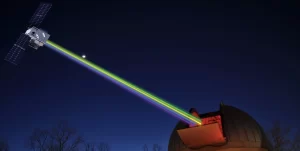NASA has approved the $19.5 million Landolt Space Mission, which aims to launch a mini-satellite the size of a breadbox into Earth’s orbit. This satellite will serve as an “artificial star” for astronomers. Consequently, this revolutionary tool will help astronomers more accurately measure the brightness of celestial objects, from nearby stars to distant supernovae, unlocking new insights into the mysteries of the universe.
Astronomers currently face challenges in accurately calibrating their telescopes and measuring the true brightness of stars. Firstly, the exact brightness of real stars is unknown, and secondly, Earth’s atmosphere can affect light measurements. The Landolt mission seeks to address this issue by providing a consistent and known source of light for calibration.
How the Landolt Satellite Works
The Landolt satellite, designed as a CubeSat, will orbit Earth at a distance of 22,236 miles. By matching the Earth’s rotation speed, it will appear fixed in the night sky. Moreover, it will fire lasers at observatories on Earth, emitting a specific number of photons. Astronomers can then use these photons to calibrate their instruments and more precisely measure the light from other celestial objects.

The improved calibration enabled by the Landolt satellite could lead to several significant advancements in astronomy. For instance, it will allow astronomers to measure the light emitted from stars with ten times more accuracy. This precision could lead to the discovery of more Earth-like exoplanets that could harbor life.
Furthermore, the Landolt mission could aid in the measurement of light from distant supernovae. Accurate measurements are crucial for calculating the expansion rate of the universe. This could help resolve current discrepancies in the values for the universe’s expansion rate, thereby shedding light on the mysterious force of dark energy.
Collaboration and Significance
The Landolt Space Mission is a collaborative effort involving researchers from various institutions. Notably, George Mason University will serve as the mission’s home base. The mission is named after the late astronomer Arlo Landolt, whose pioneering work in photometry and standard stars laid the foundation for this groundbreaking project.

Overall, the Landolt Space Mission represents a significant advancement in astronomy. By providing a revolutionary tool that enables more precise measurements, it has the potential to lead to groundbreaking discoveries about the universe we inhabit. Thus, this mission stands as a testament to the collaborative spirit and innovative drive within the astronomical community.














